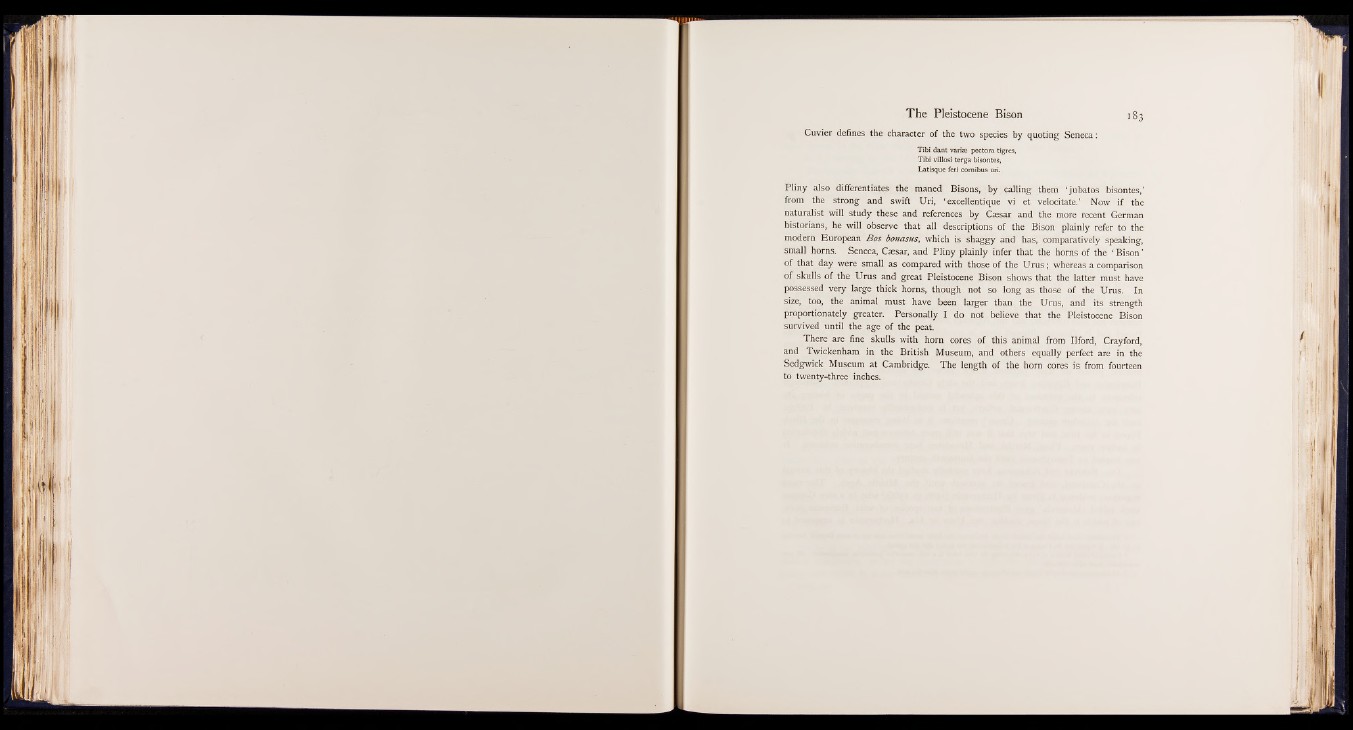
Cuvier defines the character of the two species by quoting Seneca:
Tibi dant varize pectora tigres,
Tib i villosi terga bisontes,
Latisque feri cornibus uri.
Pliny also differentiates the maned Bisons, by calling them ‘ jubatos bisontes,’
from the strong and swift Uri, ‘ excellentique vi et velocitate.’ Now if the
naturalist will study these and references by Caesar and the more recent German
historians, he will observe that all descriptions of the Bison plainly refer to the
modern European Bos bonasus, which is shaggy and has, comparatively speaking,
small horns. Seneca, Caesar, and Pliny plainly infer that the horns of the ‘ Bison ’
of that day were small as compared with those of the Urus; whereas a comparison
of skulls of the Urus and great Pleistocene Bison shows that the latter must have
possessed very large thick horns, though, not so long as those of the Urus. In
size, too, the animal must have been larger than the Urus, and its strength
proportionately greater. Personally I do not believe that the Pleistocene Bison
survived until the age of the peat.
There are fine skulls with horn cores of this animal from Ilford, Crayford,
and Twickenham in the British Museum, and others equally perfect are in the
Sedgwick Museum at Cambridge. The length of the horn cores is from fourteen
to twenty-three inches.